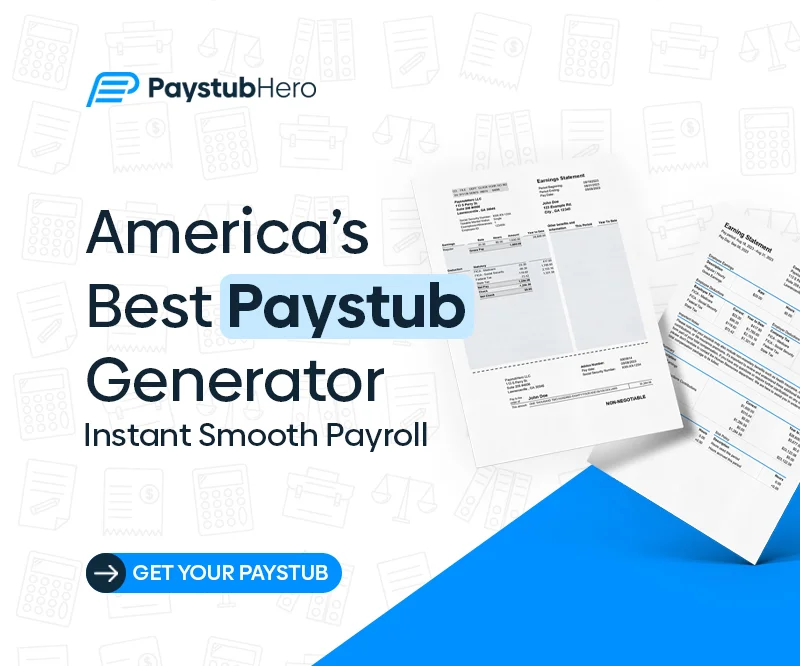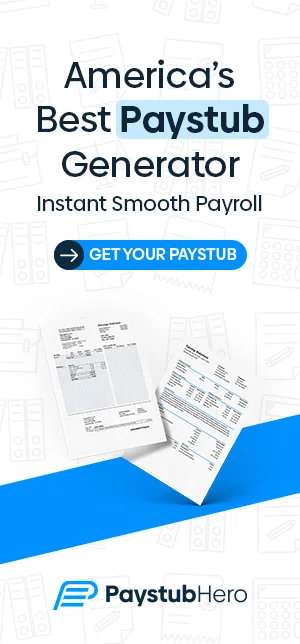What is proof of income, and why is it important? At its core, proof of income is a document or set of documents that substantiate an individual’s earnings. It serves as an essential financial checkpoint, demonstrating economic stability and capacity to meet financial obligations, whether it’s securing a loan, renting an apartment, or qualifying for credit.
Proof of income is like a financial passport. It’s a universal language that banks, landlords, and even certain government agencies understand.
It conveys a story about your financial health without divulging every personal detail. It is, in essence, a snapshot of your financial world.
So, what counts as proof of income? There are numerous forms this evidence can take, each catering to different circumstances and requirements. For salaried employees, a simple paystub may suffice. For self-employed individuals, a 1099 form or a profit and loss statement becomes necessary.
These documents all serve the same purpose – to verify income – but each tells a different tale of how you earn your money.
In this guide, we delve deeper into these various income proofs, their significance, and their role in different professional settings.
We’ll unravel the intricacies of income verification letters, 1099 forms for self-employed individuals, and the importance of a profit and loss statement for business owners.
This comprehensive guide will shed light on the importance of proof of income, and why it’s not as daunting as it seems, particularly with the right tools at your disposal.
Table of Contents
- Introduction
- Understanding Proof of Income Letters: A Vital Financial Passport
- Income Verification Documents – More than just Paystubs: A Deep Dive into Diverse Income Evidences
- 1099: A Key Document for the Self-Employed: Unpacking the Importance of this Income Verification Tool
- Profit and Loss Statement for the Self-Employed: The Unsung Hero of Financial Documentation
- Navigating the World of Income Verification with Paystubhero: Revolutionizing Proof of Income Generation
Understanding Proof of Income Letters: A Vital Financial Passport
Proof of income letters, also known as income verification letters, form an integral part of the financial document landscape. They serve as official testimonies of an individual’s income, providing crucial information regarding the stability and regularity of their earnings.
These letters, usually issued by employers, often contain information about an employee’s job position, their tenure with the company, and their regular salary or hourly wages. They effectively certify that the person in question has a stable source of income, establishing their credibility in the eyes of financial institutions, landlords, or other entities that require income verification.
For freelancers, independent contractors, or anyone who doesn’t fit the traditional employment mold, proof of income letters may come from their clients.
Alternatively, they may maintain detailed and organized invoices to substantiate their income.
In a world that’s witnessing an increasing number of people breaking away from traditional employment paths, understanding the essence and relevance of proof of income letters is key.
Whether you’re a gig worker, a freelancer, or running your own small business, these documents provide a pathway to financial services that hinge on the knowledge of your income.
Proof of income letters bridge the gap between your income source and the entities requiring income verification, offering a trusted and reliable means of showcasing your financial capacity. Hence, having these documents at your disposal and understanding their value is crucial for seamless financial transactions and dealings.
Income Verification Documents – More than just Paystubs: A Deep Dive into Diverse Income Evidences
When it comes to income verification documents, paystubs often come to mind as the most common method for employers to detail an employee’s income. These handy slips of paper or digital files are like breadcrumbs that trace your income history. However, in today’s diverse workforce, they represent just the tip of the iceberg.
Indeed, income verification extends far beyond traditional paystubs, especially for those who don’t fit into the standard mold of salaried employees.
Freelancers, gig workers, entrepreneurs, and self-employed individuals require different forms of income proof that accurately reflect their unique earning situations.
For instance, tax returns often serve as a powerful testament to one’s annual income.
For many, a comprehensive tax return provides an all-encompassing view of their earnings, inclusive of diverse income streams.
Bank statements can also be utilized as an income verification tool, especially for those with varied income sources. They offer a chronological view of income, expenses, and balance, reflecting the financial standing of an individual.
For self-employed individuals, the 1099 form becomes a critical document. Provided by clients or customers, a 1099 form delineates the amount of money they paid for your services throughout the year.
The world of income verification documents is vast and varied, encompassing a wide array of documents tailored to suit individual income scenarios.
In essence, these documents validate your income in a manner most reflective of your unique earnings environment, ensuring that financial entities receive a clear and accurate depiction of your financial standing.
1099: A Key Document for the Self-Employed: Unpacking the Importance of this Income Verification Tool
When it comes to self-employment, the 1099 form is an indispensable proof of income. Unlike traditional employees who receive W-2 forms from their employers, self-employed individuals, such as freelancers and independent contractors, are typically furnished with a 1099 form by their clients or customers.
The 1099 form is a testament to the amount of money these individuals earn from their services. The form is categorized into various types, such as 1099-MISC, 1099-K, 1099-NEC, each catering to different forms of non-employee income, making it a versatile document for different income types.
In addition to serving as proof of income, the 1099 form plays a pivotal role in tax preparation.
Since self-employed individuals are responsible for calculating and paying their own taxes, having a 1099 form can help ensure that the reported income to the IRS aligns with the client-reported figures. This makes tax filing transparent, accurate, and less daunting.
According to IRS statistics, in 2020 alone, over 15.3 million 1099 forms were filed, which underscores the integral role this document plays in the financial landscape of self-employed individuals.
In essence, the 1099 form is more than just a proof of income document for the self-employed. It is a financial instrument that offers transparency, credibility, and authenticity, bridging the gap between their unique work structure and the conventional income verification process.
Profit and Loss Statement for the Self-Employed: The Unsung Hero of Financial Documentation
A profit and loss statement, often overlooked, is a fundamental document for self-employed individuals and small business owners. This financial report, also known as an income statement, serves as a ledger of your business’s financial performance over a specified period.
Unlike paystubs or 1099 forms, a profit and loss statement delves deeper into your financial narrative, demonstrating not just income, but also the expenditures your business incurs. It offers a complete picture of your revenues, costs, and expenses, providing a clear net income figure that represents the profitability of your business.
Beyond just serving as a proof of income, this statement can be a valuable tool for strategic planning and financial management. It offers a detailed insight into your financial operations, helping identify areas where you can cut costs or invest more for growth.
It’s no wonder that the Small Business Administration reports about 80% of small businesses leverage financial statements like these for internal decision-making purposes.
Furthermore, for external stakeholders like lenders or investors, a profit and loss statement provides a comprehensive understanding of your business’s financial health, enhancing their confidence in your enterprise.
In the dynamic world of self-employment, where income streams may ebb and flow, a profit and loss statement stands as a robust document that authenticates your income.
It underscores your ability to manage and sustain a business, making it an indispensable tool in your financial arsenal.
Navigating the World of Income Verification with Paystubhero: Revolutionizing Proof of Income Generation
In the increasingly complex landscape of income verification, having a reliable, simple, and efficient solution can be invaluable. Enter Paystubhero – an online payroll software designed to meet the unique needs of entrepreneurs, freelancers, small businesses, and independent contractors.
Traditional payroll services often cater to larger corporations, leaving individuals and smaller entities grappling with a system not designed with them in mind. That’s where
Paystubhero comes in, providing a user-friendly and robust platform that empowers you to generate your proof of income documents with ease and precision.
One of the core strengths of Paystubhero is its simplicity. By merely entering your company and employee information, the software automatically handles all the intricate calculations.
Whether it’s generating a paystub or creating a comprehensive income statement, the process is streamlined and hassle-free. It’s as easy as 1-2-3.
But simplicity doesn’t come at the expense of accuracy or compliance. Paystubhero ensures that all calculations adhere to tax laws and other pertinent regulations. This adherence to accuracy not only provides reliable income documentation but also fosters confidence when it’s time to report your income.
Moreover, Paystubhero embraces the diverse income scenarios of the self-employed. Whether you’re a freelancer juggling multiple clients or an entrepreneur steering a small business, Paystubhero is designed to accommodate your unique needs, making it a preferred choice for a growing number of self-employed individuals.
Navigating the world of income verification doesn’t have to be a complex or daunting task.
With Paystubhero, you can effortlessly generate the proof of income documents you need, providing a reliable and straightforward solution in an ever-evolving financial landscape. Take control of your income documentation with Paystubhero – your partner in seamless and efficient proof of income generation.
Frequent Asked Questions
How can I prove my income without pay stubs?
You can use alternative documents like income tax returns, 1099 forms, profit and loss statements, or bank statements to prove your income. For freelancers and contractors, invoices and client contracts can also serve as proof.
Are bank statements proof of income?
- Yes, bank statements can serve as proof of income. They detail your cash flow, including deposits that reflect income sources, providing a holistic view of your financial situation.
What counts as proof of income for an apartment?
Property managers typically accept pay stubs, W-2 forms, or income tax returns as proof of income. For self-employed individuals, 1099 forms, profit and loss statements, or bank statements can be used.





